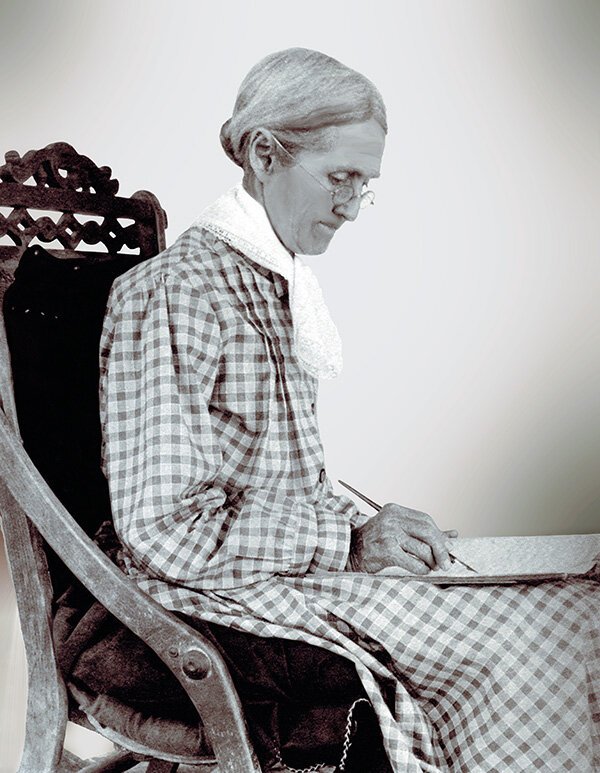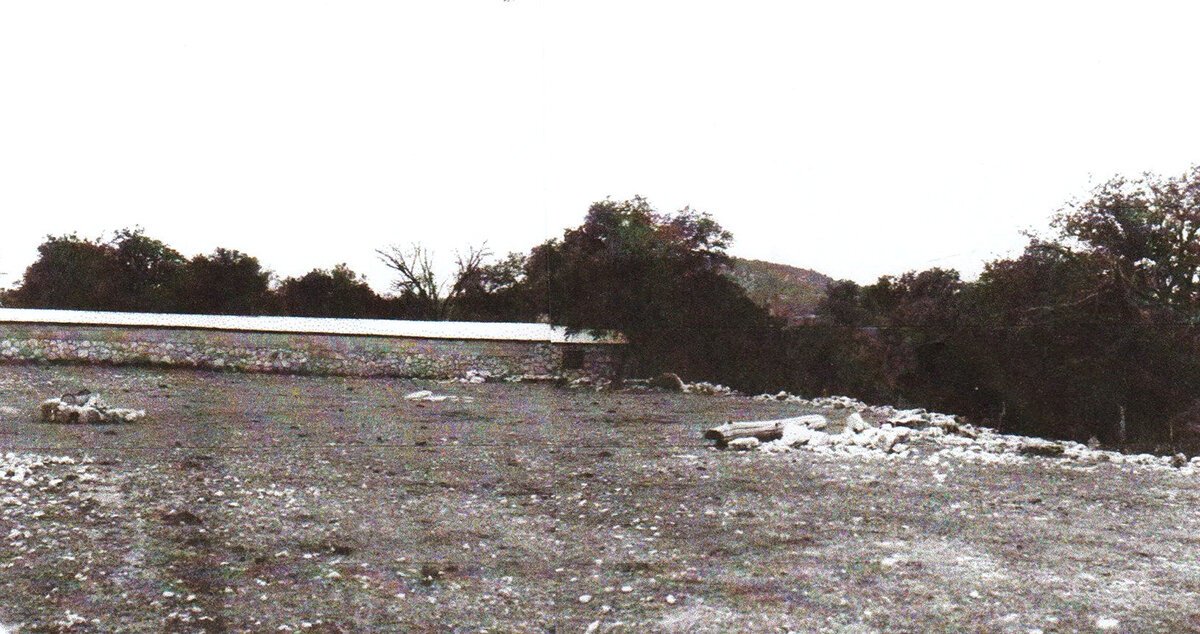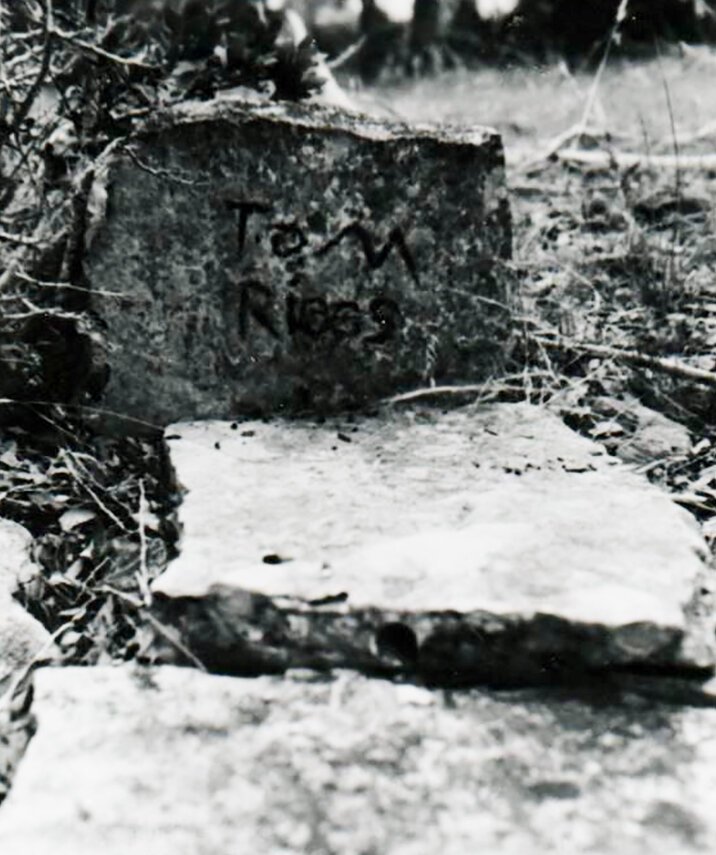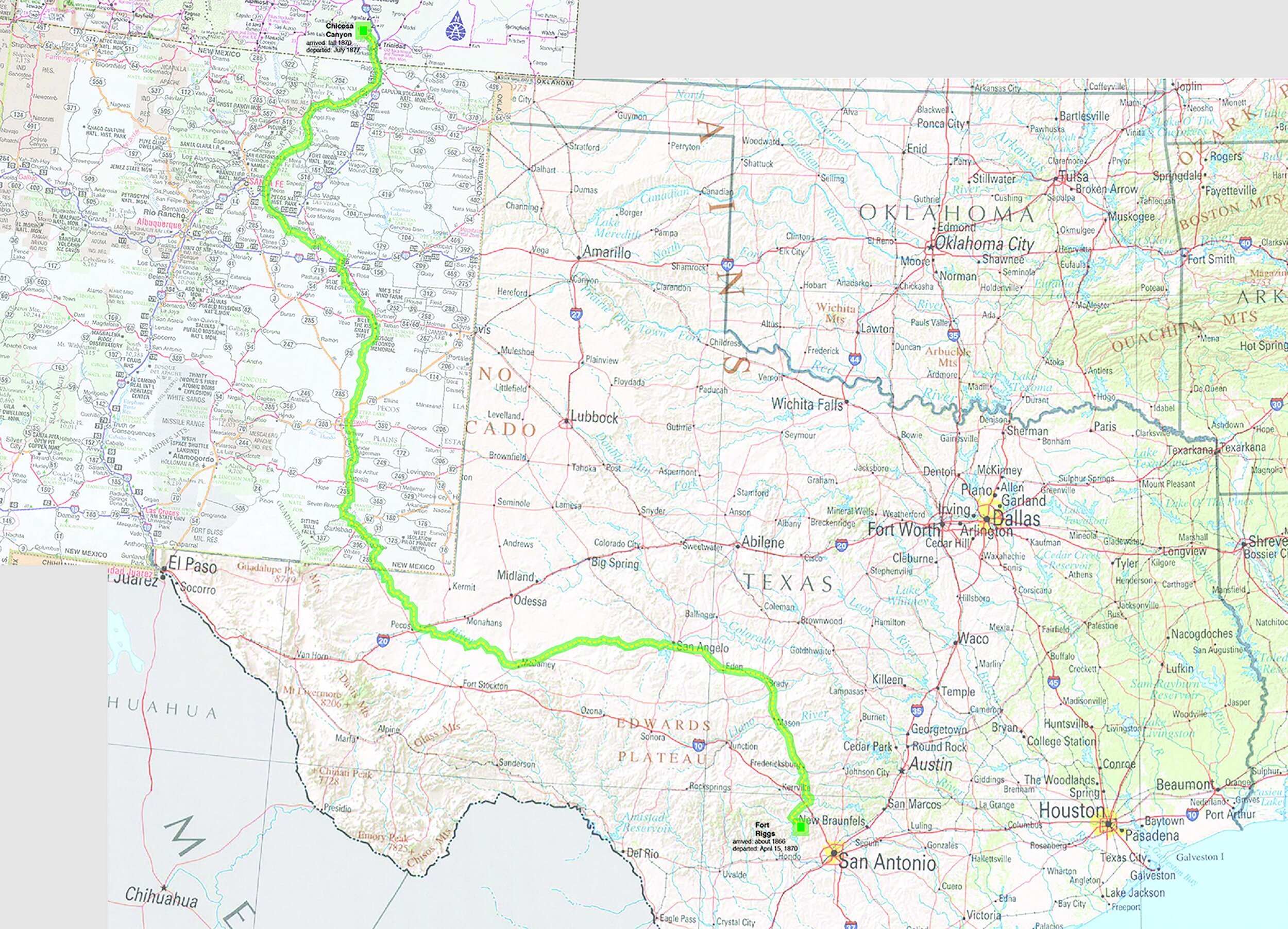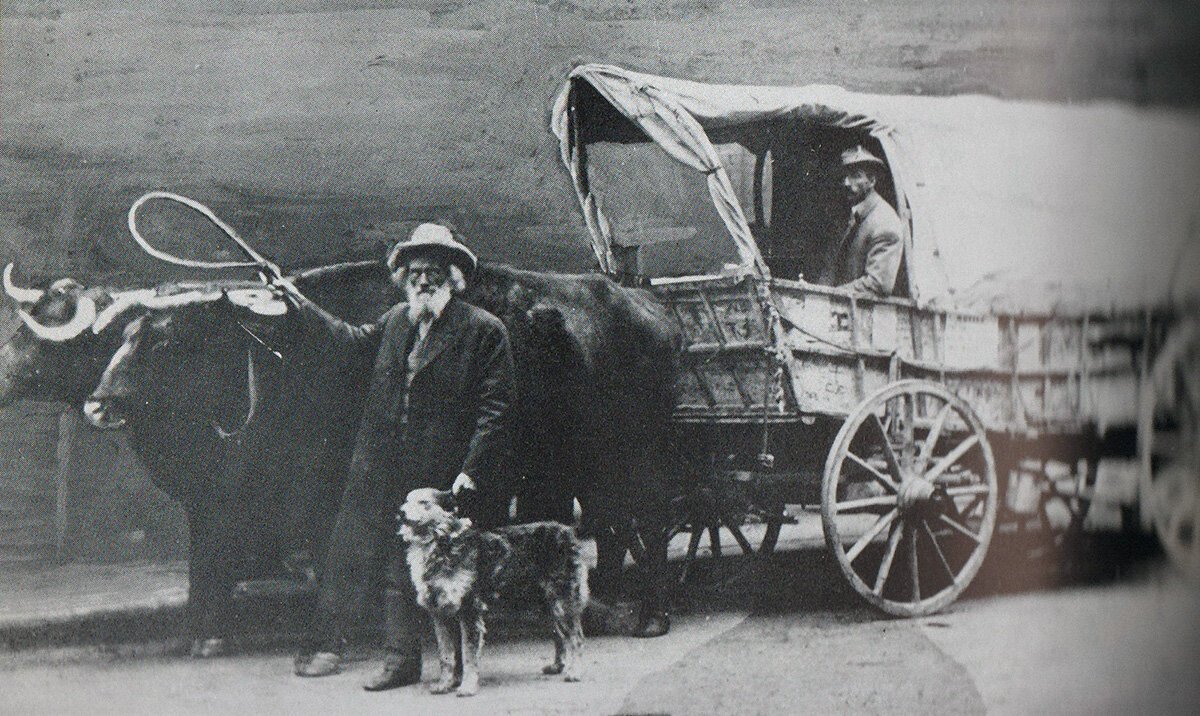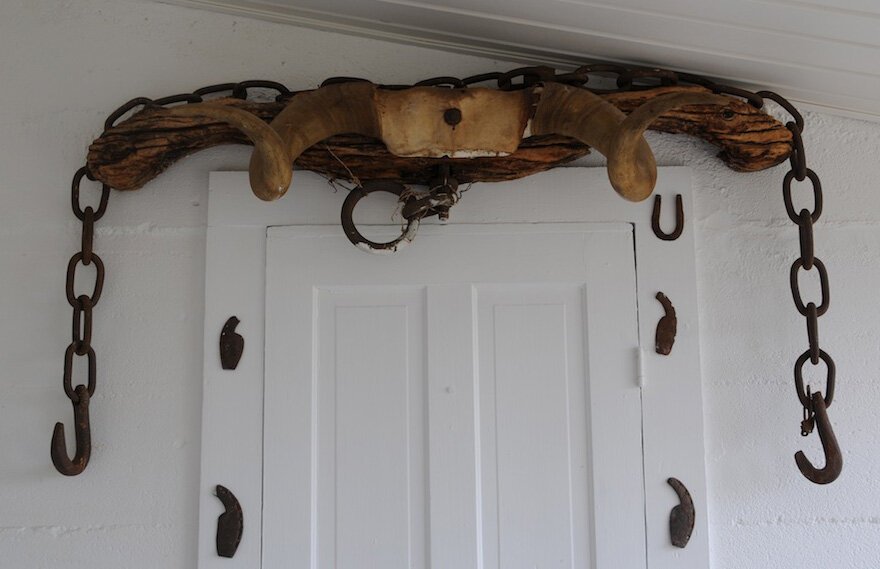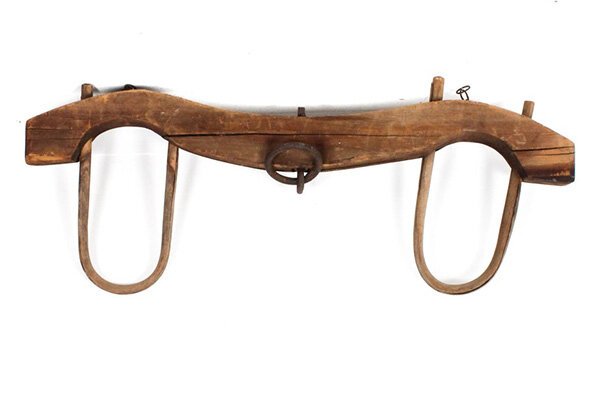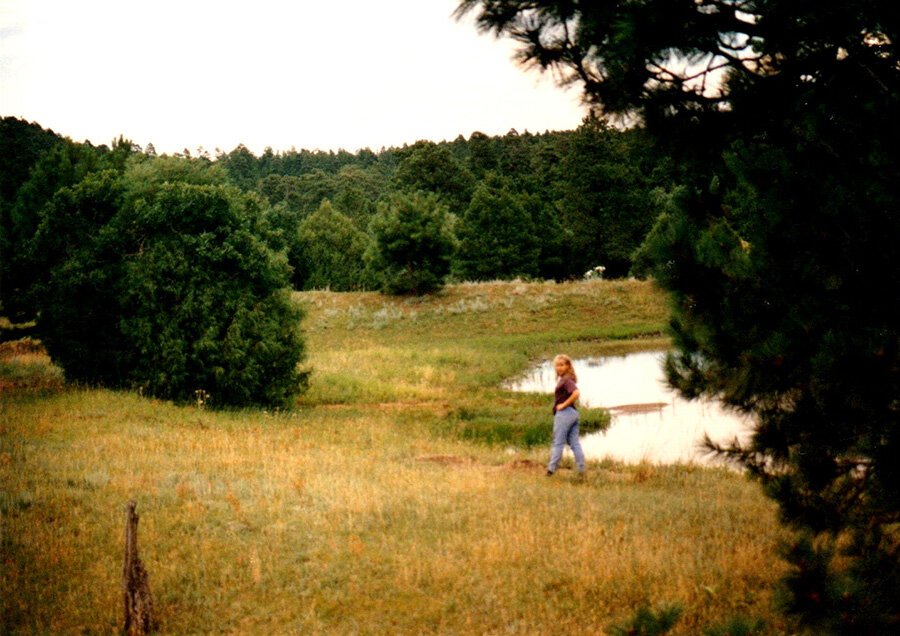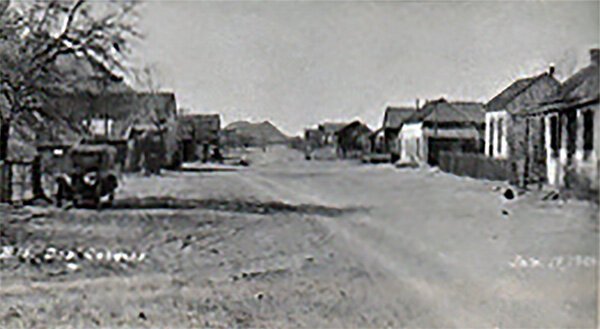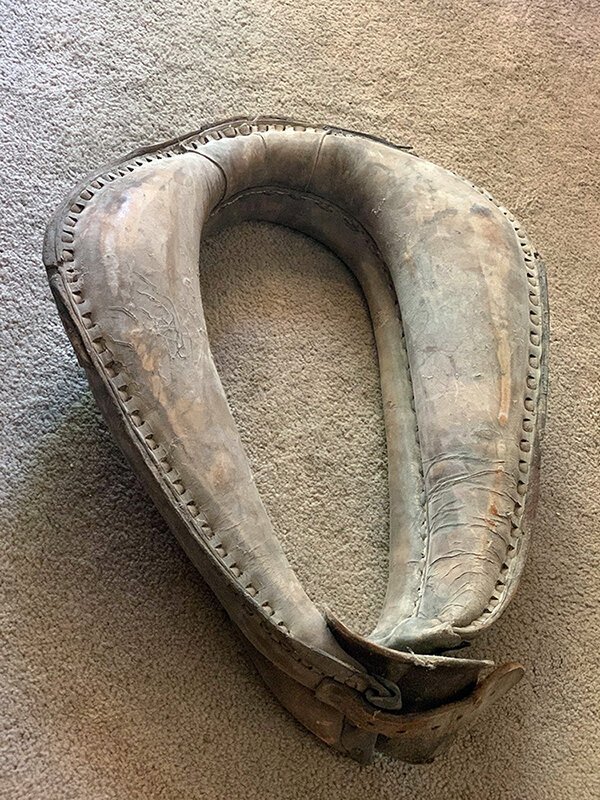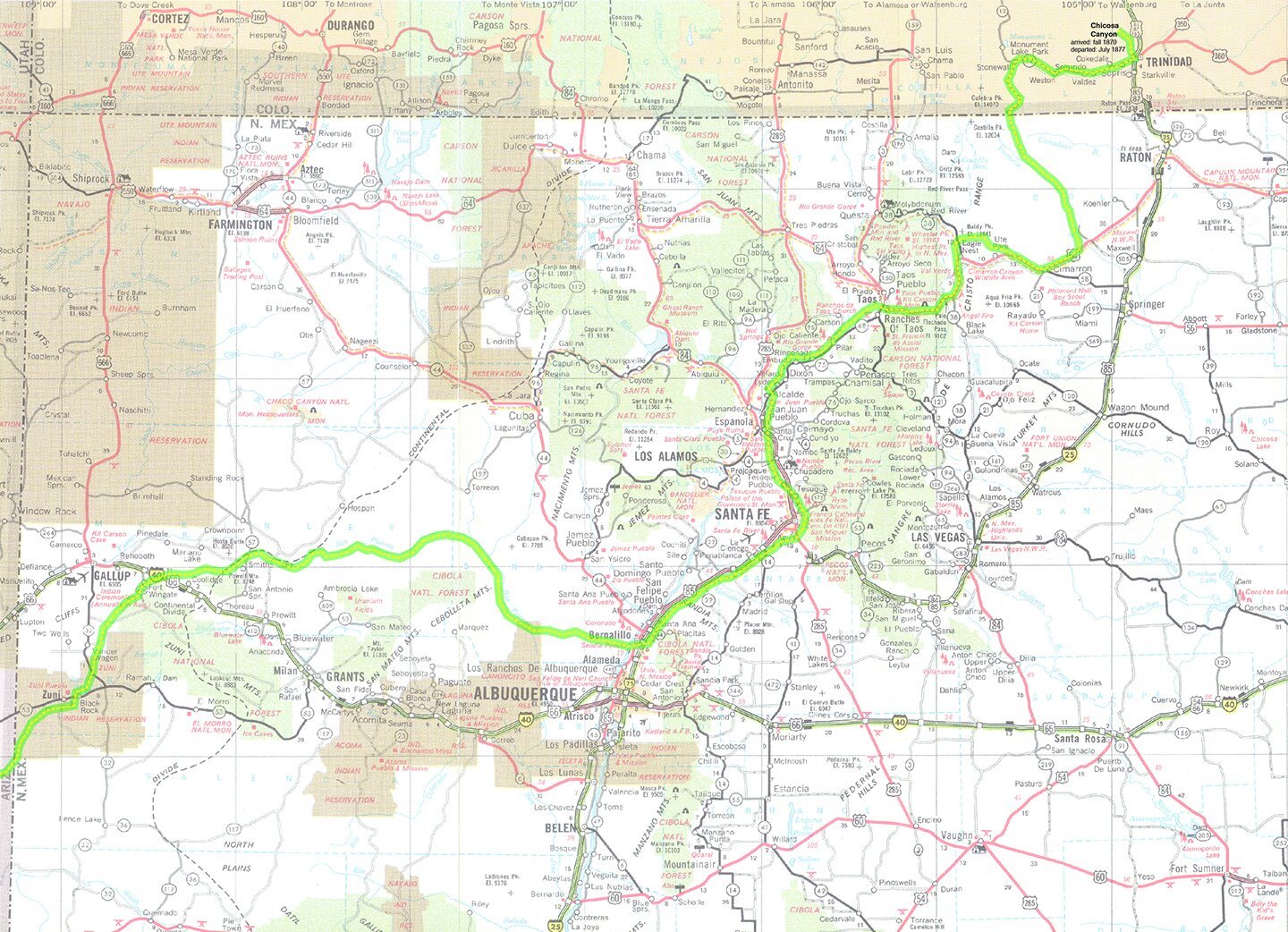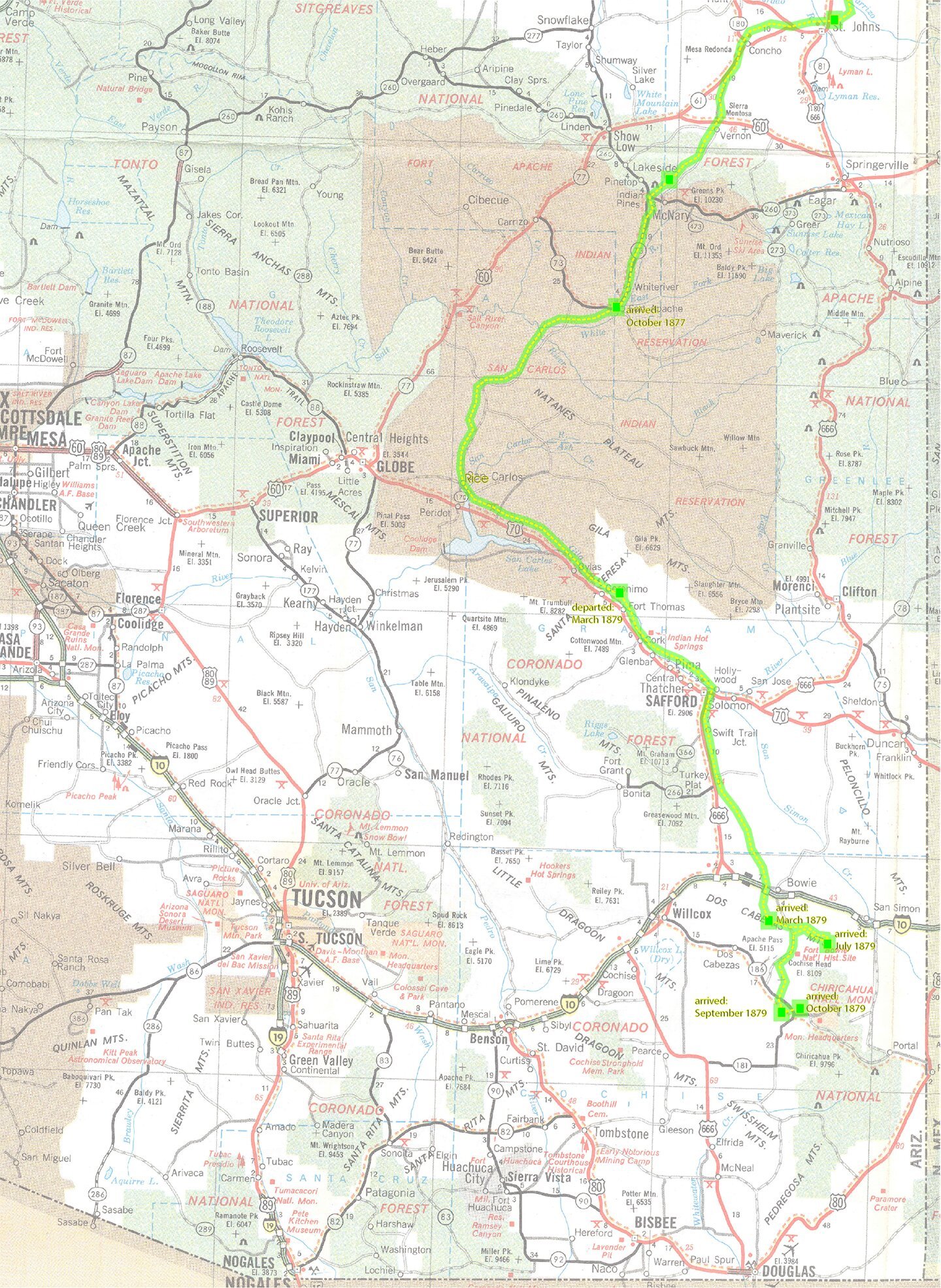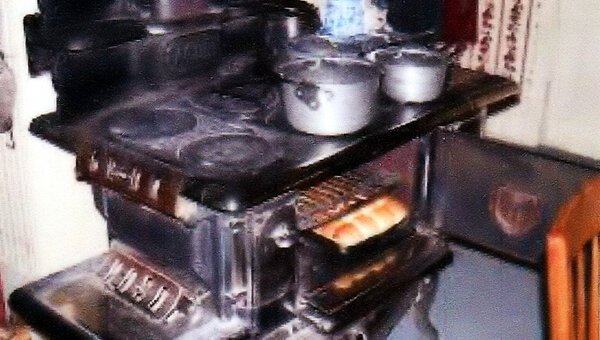MARY ELIZABETH RIGGS: MY STORY
PAGE 1 OF 3
MARY ELIZABETH (ROBBINS) RIGGS
page 1 of 3
page 2 of 3
page 3 of 3
FORWARD
My name is Nancy Riggs Sloan, great granddaughter of Brannick and Mary Elizabeth Robbins Riggs. I have a lot of materials that have been collected about Brannick and Mary Elizabeth Robbins Riggs and their children that can be compiled into book form. As I worked with the information collected, I began to feel that not everyone is going to be interested in the many details, like the financial information printed in the newspaper when the Riggs Cattle Company was organized or the yearly financial report printed in the newspaper of the Riggs Bank. So, I am going to try to write a Readers Digest Condensed version for your enjoyment. If you want the more in-depth details, please contact me through the contact page on this website and I will happily share the long version of their story with you. CONTACT
I am including in this story original entries from Great grandmother Riggs’ diaries. The entries will appear in a handwriting font. They are exactly as she wrote them, spelling and all.
“No rain today”
Great Grandmother’s original diaries have been placed in the Special Collections Library in the main library on the campus of the University of Arizona in Tucson, Arizona, and are available for anyone to study at that facility. The first diary (1896 through 1912) was placed there by Mindy Moore Scott and the second diary (1913 through 1924) by Chris Roll, both descendants of Brannick and Mary Elizabeth Robbins Riggs.
Mary Elizabeth’s diaries have also been combined with information taken from the Arizona Range News newspaper and other Arizona newspapers. This information is compiled and is available upon request. CONTACT Articles from a newspaper will appear with a publish date, newspaper name and the text will be centered. The following is an example.
Arizona Range News
Friday, 21 Nov 1913
Great Grandmother Riggs faithfully wrote in her Diary/Journal every day, but she only wrote one-line entries. She did not include stories, explanations or relationships of people mentioned. Although the information she shared is interesting, it isn’t always easy to understand connections between people, places and events. I have taken license to write this work as though she was writing it in story form herself, trying to help make those connections. The information has come from her diaries, local newspapers and family stories. This has been a labor of love and is the Riggs family story as I hope my great grandmother, Mary Elizabeth Robbins Riggs, would want it to be written.
MARY ELIZABETH RIGGS WRITING IN HER DIARY
MY STORY
It is the 27th day of July, 1923, my 85th birthday. I have been sitting here in my rocking chair writing in my journal. Maybe someday some of my descendants may be interested in my life and the lives of my children. As I have been reflecting, my thoughts have been flitting from one adventure of my life to another, like the butterflies do, going from one flower to the next on a lilac bush. I have kept a daily journal since 1896 but today I have been thinking, and have decided, maybe I should put the things I have written into story form. I will use some of my journal entries as reminders of things to be written about.
There is a newspaper in Willcox that is very good about reporting the happenings of all the area around the town. They are often better at telling of a happening than I am so I will include some of the newspaper stories that pertain to our family.
GENEALOGY
Let me tell you something about me. I was born Mary Elizabeth Robbins on 27 July 1838 in Franklin County, Tennessee, the daughter of John Robbins and Sarah A. Hudson Robbins. I am the oldest of seven children. My brothers and sisters are: Martha Jane, James Monroe, William Hudson, John Thompson, Melvina Ruth, and Louisa Emiline. Father was a schoolteacher and a farmer but had very poor health. Because of his poor health, we lived for a time in Franklin County, Tennessee, with grand-father William Hudson, Sr., my mother’s father. Sometime after 1850 my family moved to Bastrop, Bastrop County, Texas, where we lived on a farm. My father wanted to live in a drier climate in hopes it would improve his health. It helped for a time but on 22 Oct 1855 my father passed away at the age of 38. I was 17 years old.
Brannick Riggs was born on 10 July 1828 in Marion County, Alabama, the son of Thomas and Rhoda Casey Riggs. Brannick was the fourth child, third son of ten children. His brothers and sisters are William Carroll, a sister that died as an infant, John Casey, Barney Kemp, Thomas, James Monroe, Margaret, Martha, and Rhoda. When he was about 7 years old, he moved with his family to Monroe County, Mississippi, then to Izard County, Arkansas. Brannick lived there until he was about 22 years old when he and Barney, his brother just younger, left and went to Texas to work. We met while he was working in Bastrop County, Texas. THOMAS AND RHODA CASEY RIGGS
On 10 July 1856, Mr. Riggs’ 28th birthday, just a few days before I turned 18, my life changed forever when I married Brannick Riggs at my mother’s farm home in Bastrop County, Texas
“Brannick Riggs born the 10 of July 1828 in Marien Co Alabama
Mary Robbins born July 27 1838 in Frankling Co Tenneysee
Married on the 10 of July 1856 Brannick Riggs to Mary in Bastrop Co Texas 1856”
BRANNICK RIGGS AND MARY RIGGS
BRANNICK AND MARY RIGGS MARRIAGE LICENSE
I was raised in a southern family and learned southern manners. Since my marriage I have always referred to my husband as “Mr. Riggs”, not because I was afraid of him but as a term of respect.
On 13 Nov 1856 my sister, Martha Jane, married John Baptist Burleson. On 11 June 1857 my mother, then widowed, married Joseph Burleson, Martha Jane’s father-in-law.
MIGRATIONS
MAP OF AREAS THE RIGGS FAMILY LIVED IN CENTRAL TEXAS
TEXAS
Following our marriage, Mr. Riggs and I moved to Travis County, Texas where he worked for Judge Parson. On 14 May 1857 I became a mother when our son, Thomas Jefferson, was born. This was to be my vocation in life and I love being a mother.
“mooved to Travice Co Thos J Riggs was born 14 of May
1857 in Travis county texas”
Mr. Riggs and his brother, Barney Kemp, decided they wanted to develop their own farm so we moved to Peach Creek in Fayette County Texas. Barney had married Louisa Jane Higler in 1856. While we were living here our second child, Rhoda, was born on 18 Mar 1859. We worked hard but were not successful as farmers. Mr. Riggs understood livestock better than he did farming. In the fall of 1859, we both sold out and the two families moved to Bell County Texas. Mr. Riggs’ brother, Thomas, had married Hanna Felton in 1855 and they were living in Bell County.
“Rhoda Riggs was borned the 18th of March in Fayett Co texas 1859
we mooved to Bell Co in the fall of 1859”
(Although we didn’t know it at the time, Rhoda was born two days after Mr. Riggs’ brother, John C., and his wife, Jane, were killed by the Indians in Coryell County Texas. The grandchildren of Thomas and Rhoda Casey Riggs, Elizabeth, Margaret, William C. and John Roland, were sent to live with their Grandparents, Thomas and Rhoda Casey Riggs, in Arkansas after their parents, John and Jane Riggs, were killed in Texas.)
In late 1860 we moved to Milam County Texas where Mr. Riggs worked for Judge Flint, caring for a herd of horses. Our second son, William Monroe Riggs was born 27 Dec 1861 while we were living in Milam County. On 15 March 1865 our second daughter, Martha, was born in Milam County.
“then mooved to Milum Co in 1860
William Riggs was born the 27 of
December 1861 in Milum Co texas”
The Civil War began in April 1861 when the Confederate forces fired on Fort Sumpter. Our families had always lived in the southern states and some were slave owners. Mr. Riggs and all of his brothers, even his father for a short time, served in the Confederate army. His brother, Barney Kemp Riggs, died of pneumonia in 1863 in Little Rock, Arkansas, while serving as a Lieutenant with the Confederate forces during the Civil War.
Mr. Riggs enlisted 1 October 1862, in Milan County, Texas, as a Private in Company D 4th Regt. Texas Cavalry under Captain Lesueur. He served 5 1/2 months, until he was wounded during a skirmish at Franklin Louisiana, on 14 April 1863.
FRANKLIN, LA WHERE BRANNICK RIGGS WAS WOUNDED DURING THE CIVIL WAR
He was taken to a Confederate hospital and the following day was captured, along with many others in the hospital, by the Union forces. Having had his arm and shoulder shattered and the bullet almost against his backbone, he was the same as a dead man. The Union doctors wanted to amputate his arm, but he protested. Being a Mason, he gave the Masonic sign to a young Union doctor, also a Mason, and the young doctor helped him avoid amputation. He was taken care of in a private home where he stayed for a number of months. Because Mr. Riggs was a sincere and good man, respected by his captors, he was paroled, provided a wagon, released, and allowed to travel home. Our small family had remained in Milam County, Texas while he was away at the war. It took some time but Mr. Riggs’ arm did recover but it was stiff from then on.
In 1902 Mr. Riggs attended a reunion of Confederate Soldiers in Dallas Texas.
“18 April 1902 Mr. Riggs went to Dallas to the confederate reunion
April 27 Mr Riggs got home from texas”
Arizona Range News
Friday 25 April 1902
Brannick Riggs left Sunday for Dallas, Texas, where he attended the reunion of Confederate soldiers which took place this week.
Arizona Range News
Friday, 2 May 1902:
SCENE AT DALLAS
CONFEDERATE REUNION
TWO TOUCHING SCENES
INCIDENT OF AN ARIZONIAN’S ACCIDENTAL MEETING
B. Riggs of Willcox, Arizona came in on the S. & P. train from Dallas where he went to attend the big reunion of Confederate Veterans, and at the S.P. Depot he told Link and Pin of some touching scenes which took place at the reunion. Old comrades who had marched shoulder to shoulder and together endured the privation of army life, met again for the first time since the day they laid down their arms and marched back to their homes. Mr. Riggs told of one of his comrades whom he had packed off the field at Cedar Creek more dead than alive. Carrying him to the field hospital he deposited him upon a couch and left him to go back to the front and take up his musket. In a day or two the army moved and he had never seen his old comrade again. “I thought he had died,” said Mr. Riggs, “but during the reunion the other day I saw a man, old and gray and feeble too, dressed in the uniform of a Colonel. The more I looked at him the more I thought I knew him. Going up to him I asked his name, he told me but could not remember me. When I spoke of the awful day at Cedar Creek a flash of recognition crossed his face and he clasped me in his arms. His life he owed to me and for several minutes neither of us could say a word on account of the steady flow of scenes of other days before our minds and what we each owed to the other.”
He, Brannick, told of the meeting of two brothers at the reunion, who had not seen each other for forty years. Both were in the Confederate army, but became separated during the war and neither had heard from the other. The name of the brothers is Culberson and one of them is a doctor living at Portales, NM, the other is a Judge in Georgia. By accident they met at the reunion and their meeting was so pathetic that everyone standing around them shed tears in sympathy.
I am speculating:
The war must have been hard on Father Riggs and his family. Their slaves were freed. Their state government was in chaos. There were lots of bad people that preyed on the misfortunes of others in the southern states. I don’t know particulars about the various battles of the war but I know there were some battles that took place in or close to Stone and Izard counties that may have been near enough to their properties to destroy buildings and farm land. Northern Arkansas and Southern Missouri were extremely dangerous at this time because of Renegade groups on both sides of the war who would travel the country side robbing and killing anyone accused of being on the opposite side of them. With these circumstances and battles close, I am sure the physical safety of the entire family would have been of great concern to Father and Mother Riggs.
During the Civil War, times were hard in Arkansas for soldier and civilian alike. All of the supplies for the armies had to come from within the region that they occupied. The people in Stone and Izard Counties were mainly subsistence farmers raising sufficient food only for their own families and livestock. There was not a developed transportation system in to and out of the area except by the White River. This was navigable only in times of high water. Therefore, supplies for soldiers couldn’t be easily brought into the area. There were many hundreds of extra people in the area needing food and supplies that just were not available. As a result, there was starvation, disease and plundering by both sides. There was also great waste through destruction of supplies by opposing armies as occupation of the area changed back and forth between the Union and the Confederacy. The valleys were bare of forage for men and animals. Families were suffering from the lack of food and disease, as were the armies of both sides. Starvation of men and animals was a worse enemy than armed men. Agricultural products were conscripted and paid for with worthless money and in reality amounted to confiscation of property without compensation. Jayhawkers and Bushwhackers (bands of Guerrillas) roamed the country side and preyed on military as well as civilian targets. There were thieves, rogues and assassins.
Things were as difficult after the war was over, as they were during the war. As the Jayhawkers and others moved into the southern states, the difficulties continued. Land was claimed by these people. Some of the settlers had moved into the area in the early days, right after the Indians were moved to Oklahoma. They claimed tracts of land but were not able to file for deeds of ownership. Some of the land claimed by early settlers didn’t have the correct paperwork because the survey work had not been done and could not be filed on, some the records were unclear. Strangers came in, filed on the land and they were given claim to the land. It took years and money to straighten all of this out.
There are a lot of possibilities that could have happened to the Riggs family making it desirable to leave Arkansas and move to Texas near children who were already living there. At this time Father Riggs was in his early 60’s and so was Mother Riggs. They were raising 4 of their grandchildren. Times were tough. They needed to be near their older children for family help and support. Texas must have looked pretty good to them. Thomas’ sons were now all living in Texas. None of the family still lived in Arkansas. I don’t know if any of them tried to fight for land their father had claimed. Thomas drowned only a few years after leaving Arkansas.
Because of terrible conditions in Arkansas toward the end of the Civil war, sometime in 1864, Father Riggs moved his wife, children and grandchildren from Izard County Arkansas to Bell County Texas where others of his family lived. Walter Clark, a neighbor in Blue Mountain Arkansas, and his family moved to Texas with the Riggs family.
On 15 March 1865 our second daughter, Martha, was born in Milam County.
“Martha Riggs was born 15 of March 1865
Milum County Texas”
“then we mooved to Bandary Co texas”
Mr. Riggs continued to try and better our living situation. Father Riggs, Mr. Riggs and James Monroe decided to develop homes in Bandera County Texas. Father Riggs left his wife and grandchildren in Bell County while he worked with his sons, Brannick and James, in Bandera County to develop homes for the families there. Walter Clark and his family, neighbors from Arkansas, also were developing a home in Bandera County.
While we were living here Mr. Riggs, his father and his brother, James, did some freighting in the Austin/San Antonio area. Brannick sent a letter to his parents while he was in San Antonio in 1866. They also ran a saw mill for a time and James made cedar shingles by hand.
This is a copy of a letter Brannick sent to his parents. Brannick and his family were already living in Bandera County. The letter was sent from San Antonio.
In 1866, we moved our family and located on the Medina River in Bandera County Texas. Here Mr. Riggs, his father, and brother James, built a compound to protect our families from the Indians, naming it Fort Riggs. This fort consisted of two rows of stones and posts set upright as close together as possible to form walls with dirt between the two walls. On top of these walls was planted cactus to keep the Indians from climbing over. The living quarters were then built inside the walls. Father Riggs planned on bringing Mother Riggs and the grandchildren, who were still living in Bell County, to Bandera County when the living quarters in the fort were finished.
FORT RIGGS NEAR MEDINA RIVER IN BANDERA COUNTY, TEXAS
While we were living here Mr. Riggs, his father and his brother, James, did some freighting in the Austin/San Antonio area. They also ran a saw mill for a time and James made cedar shingles by hand.
The Medina River occasionally has devastating floods. The 16th of September 1867, there was a flood in the river that brought tragedy to our family. We had stock pasturing on both sides of the river and the animals that were across the river needed to be checked on. Since Father Riggs was a strong swimmer, he felt he could safely swim across the river even though it was in flood stage but he did not make it across. He may have been taken with cramps for he was seen to go under and failed to come up. The next day after the water had gone down, his body was found caught in a tree. He was buried in a lone grave under some trees close by the Medina River near Pipe Springs, Bandera County, Texas. The grave was marked with a flat stone upon which the name “Tom Riggs” was carved.
THOMAS RIGGS GRAVE, BANDERA COUNTY, TEXAS
At the time of Father Riggs’ death three of his children, John C., Barney Kemp and an infant girl, were already deceased. There is a possibility that his youngest son, Charles, died during the Civil War. This still has to be proven. Two of their sons, William Carroll, and Thomas were living in the Bell County area. Since Father Riggs had been working on living quarters for them in Bandera County, it was decided that as soon as the living quarters were finished we would move Mother Riggs and our nieces and nephews to Fort Riggs.
Our third son, Brannick Benjamin, was born here 21 October 1867, a month after his Grandfathers death.
“Brannick B Riggs was bornd 21 of october 1867 in Bandary co texas”
While we lived in Bandera County Rhoda Elizabeth, Margaret Ann, William C., John Roland, T.J., Rhoda and William M. all attended the local school.
About this time James married a local girl, Narcissus Benton. On 31 Dec 1868 Margaret Ann Riggs, daughter of John and Jane Riggs, married John Turner Benton. John and Narcissus were brother and sister. On 27 Jan 1870 Rhoda Elizabeth Riggs, daughter of John and Jane Riggs, married Abraham C. Conover. Father Riggs’ daughters, Susan and Rachel both married in Bandera County. Rachel married William James 12 Mar 1870. Susan married James G. Henry 27 Mar 1875. This was a busy time for us because our fourth son, James Jay, was born 31 January 1870.
“James J Riggs was born 31 of January 1870 in Bandary texas”
We had a nice place developing in Bandera County but Mr. Riggs and James felt they could do better if they could get to the gold fields in California. So, we loaded up our possessions, including our cook stove, gathered our livestock and on 15 April 1870 joined a wagon train that was headed for California. Mr. Riggs was 43 years old; I was 33 years old and our children ranged in age from 13 to just a few months old. James and his wife, Narcissus, went with us. Mr. Riggs’ mother, Rhoda Casey Riggs (age 69), and his nephews, William C. (age 14) and John R. (age 12) were also part of our wagon train. Our son, William Monroe, drove the one yoke of oxen that drew the wagon carrying Grandmother Rhoda Riggs from Texas to Colorado when he was only nine years old.
We traveled northwest out of Texas, north through New Mexico and into southern Colorado stopping in Bonito Canyon near Trinidad, Colorado July 26, 1870. Although we traveled through Indian lands we were not troubled by them. After living in this area for a while we abandoned our trip to California.
TRIP FROM BANDERA COUNTY, TEXAS TO TRINIDAD, COLORADO AREA
As I sit here thinking about it, since the invention of the automobile a lot of things have changed. When my grandchildren or great grandchildren read this, they may have never seen a team of oxen and know nothing about how to work them. (As I was researching about Oxen while writing this story I found the following pictures and information:) I would like to tell you a little about them. Oxen are usually large strong castrated male cattle used to haul loads or to plow fields. They are harnessed together with a wooden yoke laid across their necks and shoulders. There is a neck bow that holds the yoke on the oxen and hangs below the neck.
TYPICALPIONEER TRAVEL BY OX TEAM AND WAGON
OX YOKE WITHOUT THE BOWS USED BY THE RIGGS FAMILY
OX YOKE WITH OX BOWS
A working relationship has to be developed between the teamster, the person driving the oxen, and the ox team. Oxen are easier to work when they realize you will provide them with adequate feed, water, rest, shelter and freedom from danger or injury. A teamster must be patient and help the oxen learn to trust that they will be fairly treated. Beyond proving himself to be in control, a teamster must also prove to his animals that he is worthy of being followed. There are no reins to guide the oxen so the teamster walks beside his team and guides them with voice commands and occasionally uses a long whip. Oxen respond to visual cues as well as voice commands. Mostly the verbal commands are as follows:
Get up – move forward Whoa – stop
Gee – turn right Haw – turn left
Easy – slow down Back – move in reverse
Step in – step toward pole or chain Step out – step away from pole or chain
Come Boss – come for feeding Use of their name to get their individual attention.
A teamster must be firm, patient and consistent. A whip or goad should be used primarily as a visual directive cue and only occasionally as a physical reminder of desired behavior.
Two years after we left Texas, on 22 January 1872, Mr. Riggs’ brother, William Carroll, passed away. He is buried in the Land cemetery near Cornhill, Williamson County, Texas. (Cornhill is now known as Jarrell, Texas.)
W.C. RIGGS HEADSTONE IN LAND CEMETERY, WILLIAMSON COUNTY, TEXAS
LAS ANIMAS COUNTY, COLORADO
Again we went to work and developed a home and business. We had brought some cattle and horses with us. With time they grew into a small herd that we could graze in the mountains around our home. The men planted alfalfa, millet and corn for feeding their cattle. After the yearly chore of branding the livestock, Mr. Riggs, James and the boys would drive the cattle for several days to Las Animas and sell them to a cattle buyer there.
The Ute Indians traveled though this area going to and coming from their hunting grounds on the plains. We would give them an occasional beef to butcher so never had any problems with them. We lived in this area for seven years.
AREA WHERE SAWMILL WAS NEAR TRINIDAD, COLORADO
A sawmill was set up and Mr. Riggs, James and the boys cut timber in the nearby mountains. The lumber was prepared and many thousands of shingles were sawn and sold in neighboring communities. 15,000, 20,000 or as many as 36,000 shingles or more may be sold at one time. Some-times James, Mr. Riggs and the boys would cut as many as 20,000 shingles in one day. We also became involved with a coal mine. Bear, deer, turkeys, and fish were hunted in the mountains providing food for our use.
While we were living in Colorado our family continued to grow. Mary Francis was born 21 May 1872. John Casey came on 21 Sep 1874 and Lucy Elizabeth arrived on 20 Oct 1876.
Mr. Riggs and I could both read and write and felt it important that our children receive what education we could provide for them, so we started a school at home for all the children in the area. A school house was built, and in the summer and fall of 1871, Mr. Steven D. Stout taught the first school in that vicinity. One of Mr. Stout’s hobbies was vocal music so among other things he taught singing at our school. People came from miles when a “singing“ was held. It didn’t matter how old you were, you attended classes when-ever you could. The older boys were needed to help at the saw mill, so they went to school when they could. Our nephew, William C. remembered school like this: “The 4th day of January, 1875, our school commenced. The 5th, 6th, and until noon the 7th, there was school. Then the teacher, (for he was not very well), dismissed until the next morning. The 8th, there was school again. The 9th and 10th, (no school). . . The 11th and 12th school, and on the latter there was snow. 13th and 14th, school, weather pleasant. The 15th, school --, windy. 17th was very windy--no school that nor the day before. The 18th, school--pleasant. The 19th, Mr. J.W. Wolf, who was the teacher, worked on his ranch--no school--pleasant. The 20th, school--windy.” James W. Wolf was the teacher. “The 1st of April, 1875, there was school--pleasant but disagreeable under foot. The 2nd, our school was out--Utes left--pleasant.” (from “Chico's Bill”, book by William Carroll Riggs)
Shortly after we arrived in Colorado, James’ wife, Narcissus, passed away. She was buried in the Wilcox Cemetery near Trinidad, Colorado.
WILCOX CEMETERY
On 11 Oct 1871 James married Elizabeth Drucella Hudson. She already had a son, Richmond Lee Hudson.
In the fall of 1876, about the time Colorado became a state, James moved his family to Arizona settling in Dos Cabezas. James did some prospecting and mining then ran a store and became the Postmaster in Dos Cabezas.
MAIN STREET, DOS CABEZAS, ARIZONA
James wrote telling of the large Sulphur Springs Valley and its wonderful grasslands untouched except by deer and antelope. This area had been the Chiricahua Apache Indian Reservation until about 1876 when it was closed and the Indians were moved to the San Carlos Reservation or to New Mexico. Very few white men were in the area at the time and plenty of good grass land was available.
Mr. Riggs and I talked it over and decided to once again pack up and move where we could acquire good land easily. So, July 1877 found us leaving Colorado. Mother Rhoda Riggs was 77 years old and it was decided the trip was going to be long and hard and would be too difficult for her to make. She stayed in Colorado with our son T. J. and our nephews, William C. and John Roland, her grandsons. Our son T.J. was age 20 and in business with his cousin William C. so chose to stay behind. John Roland had married Rosetta Darling earlier that year. Rhoda was engaged to the young school teacher, James William Wolf, mentioned before. He and his brother were planning on coming to Arizona as soon as they could, to take up land for a ranch in the Sulphur Springs Valley as well. There were many tears as we left for it was hard to leave family. We didn’t know it then but we would never see John Roland or Mother Riggs again in this life. Leaving family was hard but we were still searching for our “El Dorado”.
ARIZONA
As we began our trip to Arizona, 16-year-old William, who was already an expert teamster, drove the big wagon drawn by six yoke of good oxen. I drove the team of horses pulling the spring wagon that had hoops and a canvas cover over it. The team of horses pulling the wagon was harnessed by placing a collar over their head that rested on their neck, a bridle was placed in their mouths and over their heads and the reins run to the driver. Harness straps were attached to a single-tree that connected between the collar and the wagon. The team was guided by the set of reins from each horse much as you guide a horse you are riding with the reins.
LEATHER HORSE COLLAR USED BY THE RIGGS FAMILY
John C. and Lucy were only about 4 and 5 when we left Colorado so they rode with me in the wagon most of the time. Rhoda, Martha, Brannick, Jim and Mary were old enough to help with the cows and horses we brought with us. They would walk or ride as they helped with herding the animals. Milking the cows twice a day, hitching and unhitching the teams, feeding and watering the animals each day and caring for the harnesses, saddles, bridles, etc. kept everyone busy. The girls also helped with the cooking and the care of the younger children.
Our trip took us to below Santa Fe, New Mexico, across to Gallup, New Mexico, St. Johns, Arizona, then to Fort Apache in the mountains of east central Arizona. We had traveled through Indian Territory in New Mexico and Arizona but had no trouble from them. In fact, at one point we had camped near the Zuni Reservation in western New Mexico south of Gallup. One morning as we were getting ready to leave a large group of Indians on horse-back approached our camp. We had no idea what was about to happen but it soon became apparent. The men had come to entertain us with their riding skills and they put on a wonderful show for our entertainment that morning just to say goodbye and send us on our trip.
TRIP THROUGH NEW MEXICO FROM TRINIDAD, COLORADO TO ARIZONA
TRIP THROUGH ARIZONA FROM ST. JOHNS TO WHAT BECAME THE RIGGS SETTLEMENT
AREA WHERE FORT APACHE IS ON THE APACHE INDIAN RESERVATION IN GILA COUNTY, ARIZONA
Traveling by Ox team and wagon and with a herd of livestock is very slow and tedious. We were only able to make between 15 and 20 miles a day depending upon the roughness of the terrain. Winter had set in by the time we got to Fort Apache, so, with William’s help, a two-room log cabin was built for us to spend the winter in. We sold milk, butter and buttermilk to the soldiers at Fort Apache to bring in some cash while we were there and the men did some freighting. We had traveled through Indian Territory in New Mexico and Arizona but had no trouble from them. There were many Indians around Fort Apache. The cabin we built had no glass in the windows and the Indian women would come stand outside and watch us through the windows while we worked. One day I had just finished washing dishes. I had gotten used to the women being there and didn’t think about it and I just threw the dish water out the window and into the faces of the women watching. I just about started an incident but we were able to pacify them. Another time I gave a young Indian boy some pinto beans to eat. They were apparently spoiled so they made him very ill. He didn’t die but we had to give the Indians some meat to avoid problems.
In the spring of 1878, we started again for Dos Cabezas. The Indians followed us until we reached the edge of the Reservation where they turned back. Our route south was across some very difficult land. Lot of mountains and deep canyons. Traveling by ox team and keeping a herd of animals together and not pushing them is slow traveling. It took us most of the summer to travel as far as Fort Thomas in the Gila River valley where we stopped again, making camp at a place that came to be known as Buttermilk Point. It is located where the river makes a large bend around a point of land, across the river from some hot springs. There was feed and water for the cattle where we camped. A two-room cabin was again built and we spent another winter on the trail. We lived off the land and sold milk, butter and buttermilk to the soldiers at Fort Thomas and to travelers passing by to earn a little cash. William did some freighting during the winter.
AREA WHERE BUTTERMILK POINT IS LOCATED ON THE GILA RIVER IN GRAHAM COUNTY, ARIZONA
We did a lot of traveling by team and wagon as we traveled across Texas, from Texas to Colorado and from Colorado to Arizona. Maybe you would be interested in what it was like to travel with a team and wagon. Wagons are not very large and there isn’t room for a lot of possessions. We took only the necessities such as food, cooking pots and utensils, bedding, clothing and grain for the dairy cattle and horses and tents. Although we didn’t use it on the trips, we carried our wood burning cook stove with us from Texas to Colorado to Arizona. We also took folding rocking chairs with us. It made it easier when there were babies to be nursed and tended. Mother Riggs, Rhoda Casey Riggs, had a folding rocker just like mine also, that she took to Colorado with her.
WOOD BURNING COOK STOVE
FOLDING ROCKING CHAIRS
Our food consisted of a variation of the following things when we could get them. The staples were flour, cornmeal, rice, oats, sugar, molasses or honey, coffee, tea, baking soda, baking powder, vinegar, Chocolate, hard cheese, lard, beans, jerky, smoked meats, hard sausage, dried fruit, potatoes, bacon, onions, and salt and pepper.
We needed things such as a large coffee pot, a large cast iron skillet and Dutch ovens for cooking. Tin plates, tin cups, knives, forks and spoons, pans, crocks, a churn, a flint box or matches, and buckets and a barrel for water. We also took lanterns & Coal oil, candles, soap and a sewing kit for repairing clothing. Whiskey was included as a medicinal along with other medicines used at the time.
Our bedding was blankets, needed for warmth while sleeping at night, which was done mostly on the ground and tarps to protect us from the weather. We had tents and a hooped cover over the wagon for protection from rain and cold.
Only necessary clothing such as a change of pants and shirt, skirt and blouse or a dress, shoes or boots and socks, a coat and bonnet or hat was taken. When we found water, we would take a day to let the teams, cattle and family rest. We would wash our clothing and ourselves.
The men brought rifles that were carried in holsters on their saddles, pistols that were carried in holsters at their side, powder, lead, shot and hunting knives carried in a sheath at their side. Shovels, axes and hatchets, saws, hammers and tools to repair harnesses were necessities. They brought the tools that they could use in preparing the lumber for our home when we got settled. Also ropes, branding irons and other tools necessary for working with our cattle. And hobbles for the teams and riding horses to be used at night.
The men hunted along the trail. They would kill rabbits, catch fish if we were near a stream with fish, and occasionally kill a deer. As we prepared our food at night any game that had been killed on the trail that day was prepared. As you can guess from the staples we took, there was not a great deal of variety in our diet although it was ample. We endured the lack of variety in our diet for we knew that when we reached the end of our journey and established our home, we would plant a garden and fruit trees and have fresh fruits and vegetables to eat in the summertime and more to preserve by canning or putting in a root cellar.
We soon developed a routine to set up our camp each evening and to take it down each morning as we prepared to travel on that day. Each person had their assigned chores. In the evening when we made camp the tents were set up, a fire was built, coffee was made, biscuits or cornbread was put to bake in a Dutch oven. We ate food like biscuits and jerky gravy, beans and cornbread, or pancakes.
Some grain was taken for the cattle but we traveled slowly enough that they could graze along the way whenever feed was available. We had dairy cattle with us that had to be milked so we had milk and butter readily available. Some have asked why it took us 2 years to make the journey from the area of Trinidad, Colorado to the southeast corner of Arizona. Traveling with a small herd of cattle and small children is slow. Some of the children walked most of the way from Colorado to Arizona. You don’t travel quickly with a herd of cattle even if it isn’t a large herd. Simply setting up camp in the evening and taking it down in the morning to get ready to move on, took a lot of time each day. Some of the land we crossed was fairly flat and easy traveling. However, there were areas where there were deep canyons or ravines that had to be crossed. Lots of places there were no roads, only trails to follow. We were traveling by ourselves with the help of only Pat Berne and our children. Also, by the time we got to Fort Apache winter was setting in. Fort Apache is in the mountains and it snows in the winter. Traveling in the winter is never easy but it is not safe when traveling with children. Because of the ruggedness of the land between Fort Apache and Fort Thomas it took us a long time to make that trip also, so we decided to spend the winter in a warmer climate where there was water and feed for the cattle.
In the spring of 1879, we made our final trip, a journey to southeastern Arizona. We stopped first at the Nine Mile Water Hole located 9 miles northwest from Fort Bowie on the Bowie/San Simon side of the Chiricahua Mountains. We set up camp with our wagons and tents and stayed here until the water gave out. We moved our camp to the mouth of Big Immigrant Canyon, about 6 miles east of Fort Bowie.
AREA OF FORT BOWIE AND EMIGRANT CANYON IN COCHISE COUNTY, ARIZONA
Except for the time we stayed in cabins at Fort Apache and Buttermilk Point, we camped out in the wagons and tents. While we were camped in Emigrant Canyon east of Fort Bowie, Barney Kemp was born 23 Aug 1879. As I think about it so many years later it is hard to imagine being camped in a covered wagon and some tents and having a baby without a doctor or midwife to help with the delivery. But then, I wasn’t the only woman to have experienced that. It was the life of a woman on the frontier of this great nation.
